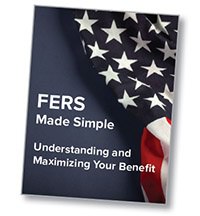How Are Your FERS, Social Security and TSP Funds Taxed?
April 21st, 2023 | 2 min. read

As a federal worker, a substantial portion of your retirement income will come from three key sources: your FERS annuity, Social Security and TSP withdrawals. One way to keep more of these assets going toward your retirement goals is to control taxes.
At Advance Capital Management, we help federal workers choose the most appropriate way to maximize their FERS pension, file for Social Security and withdraw funds from the TSP. Income from each of these sources is generally taxed as ordinary income. That means a critical factor in those decisions is how much you pay in taxes. After all, no one wants to pay more in taxes than they have to.
So, here’s a look at how these primary retirement income sources are taxed.
This article covers the following:
- How the FERS basic benefit is taxed
- How Social Security is taxed
- How TSP withdrawals are taxed
How FERS Annuity Payments Are Taxed
FERS (Federal Employees Retirement System) annuity payments are subject to federal income tax. The amount of tax owed on FERS annuity payments depends on several factors, including the amount of the annuity, your tax bracket, and any other sources of income they have.
You can expect to owe taxes on most of your FERS annuity payments. However, you won’t pay taxes on the portion of your payment that comes from contributions that have already been taxed.
How Social Security Is Taxed
Up to 85% of your Social Security benefit may also be subject to federal income tax, depending on your income level. If your combined income (including Social Security benefits, taxable pensions, wages, and any other taxable income) exceeds a certain threshold, then a portion of your Social Security benefits will be subject to taxation:
- up to 50% of your benefits if your income is $25,000 to $34,000 for an individual or $32,000 to $44,000 for a married couple filing jointly
- up to 85% of your benefits if your income is more than $34,000 (individual) or $44,000 (couple)
You may also have to pay state taxes on your Social Security benefit in you live in one of these 12 states: Colorado, Connecticut, Kansas, Minnesota, Missouri, Montana, Nebraska, New Mexico, Rhode Island, Vermont, Utah and West Virginia.
How TSP Withdrawals Are Taxed
TSP (Thrift Savings Plan) withdrawals are also subject to federal income tax. The amount of tax owed on TSP withdrawals depends on your tax bracket and the withdrawal amount. TSP withdrawals made before age 59½ may also be subject to a 10% early withdrawal penalty, unless an exception applies.
The same tax rules apply if you transfer your TSP funds to an Individual Retirement Account (IRA). You would not have to pay taxes on the transfer, but your IRA withdrawals would be taxed as ordinary income.
The Bottom Line
It's important to note that your overall tax burden is also impacted by assets you have beyond your FERS annuity payments, Social Security benefits and TSP withdrawals. Therefore, it’s a good idea to consult with a FERS-experienced financial adviser to determine the specific tax implications of these payments in your particular situation.
Learn more about federal retirement benefits by downloading our free, easy-to-understand guidebook, FERS Made Simple: Understanding and Maximizing Your Benefit.
As a financial adviser, Kurt takes a comprehensive approach to help clients work toward their financial goals by providing wealth management tools including retirement planning, investment portfolio advice and tax strategies. He specializes in federal government benefits and is a Chartered Retirement Planning Counselor.


